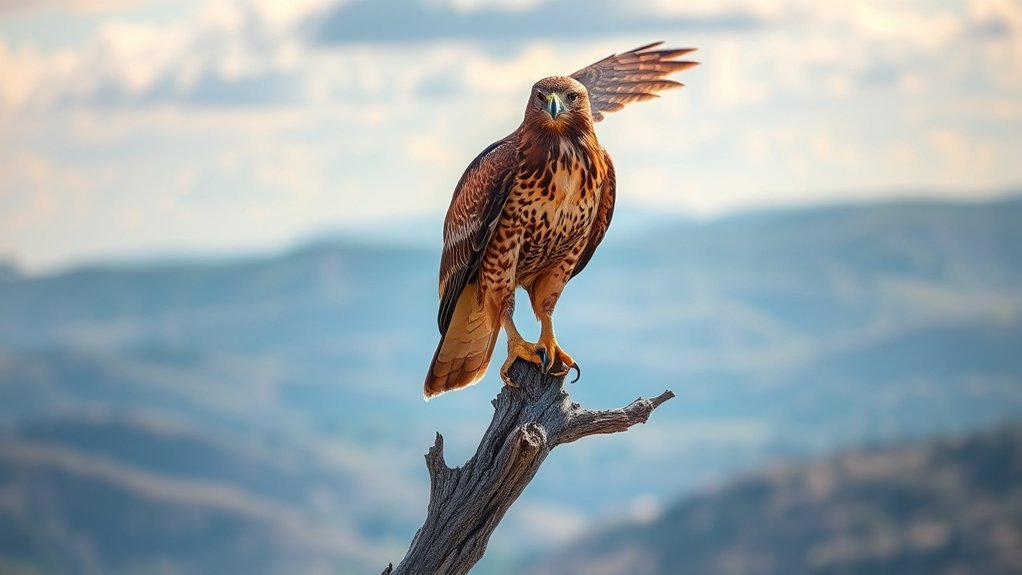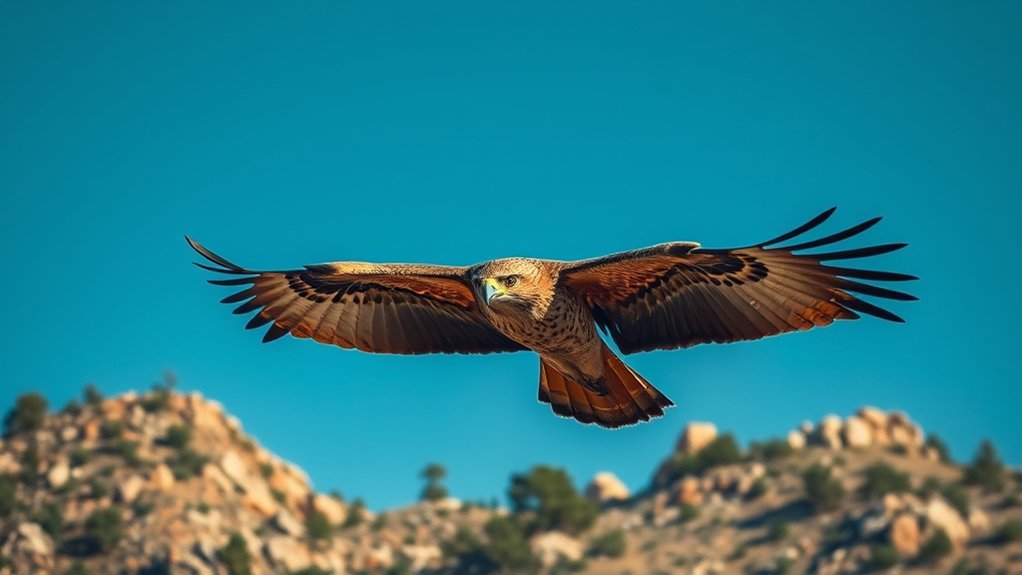How Much Weight Can Hawks Carry?
Hawks are strong birds known for their hunting skills. They can carry prey that is about half their body weight. Different types of hawks can lift different amounts, and their size and age can make a big difference in how much they can handle.
When hawks catch their food, they use special techniques that help them lift and carry their prey. If they try to take on something heavier than they can manage, it can be tough. They might struggle, especially if the weather is bad or if the prey is too big.
Understanding how hawks hunt and what they can carry helps us appreciate these amazing birds. Their strength and cleverness make them great hunters in the wild.
A Quick Overview
Hawks are strong birds. They can usually carry animals that weigh up to half of their own body weight while flying. Bigger hawks can lift heavier animals than smaller ones.
A hawk's strength and the shape of its wings help it carry weight. Young hawks, who are still learning, find it hard to lift larger animals because they do not have enough strength yet.
The weight of what they carry matters for hunting. Lighter hawks do better when chasing quick, small animals.
Understanding Hawk Anatomy and Adaptations

Hawks have cool features that help them hunt and carry food. Their eyes are very sharp, which lets them see small animals from far away. This special eyesight is why they can spot their dinner easily.
Their wings are built for flying quickly and making sharp turns. This helps them catch their prey when they're chasing them in the air.
Hawks also have strong legs and sharp talons. These help them grab and hold onto their food tightly.
Hawks have light bones, which makes it easier for them to fly. Their muscles are strong, giving them the power they need to soar through the sky.
All these features work together, making hawks great hunters in nature. Their body parts fit together perfectly, helping them survive and thrive in their environment.
Factors Affecting Carrying Capacity

Hawks are amazing birds, and their bodies have special features that help them carry weight while flying. Their wings are shaped just right to help them lift off the ground and stay in the air.
When you watch a hawk flap its wings, you can see how powerful they are. These strong wings let them fly easily, even when they're holding onto something, like their food.
Muscle strength is super important too. Hawks have strong chest muscles that help them soar high in the sky and carry their catch. Different types of hawks have different sizes and muscle strengths, which means some can carry heavier prey than others.
Common Types of Prey for Hawks

Hawks are amazing birds that have a varied diet. They hunt small animals, birds, and sometimes even reptiles. This shows how well they can adapt to their surroundings.
Some common meals for hawks are rodents, like mice and voles. These little creatures give hawks a lot of energy for hunting. When hawks chase after them, they display incredible flying skills. It's fascinating to watch!
Hawks also like to catch smaller birds, especially in open fields where they can easily see them move. In addition to mammals and birds, they may hunt insects or fish depending on where they live.
Each type of prey shows how smart and versatile hawks are, making them top hunters in nature. Learning about what they eat helps us appreciate their hunting skills and the important role they play in the environment.
Hawk Species and Their Hunting Techniques
Many hawk species have special ways to hunt that help them survive in their homes. For example, the red-tailed hawk likes to sit high up on a branch. From there, it can see its food clearly and then swoop down fast to catch it.
On the other hand, sharp-shinned hawks are quick and nimble. They fly fast through thick trees to catch small birds. This skill helps them hunt in places where other birds might find it hard to move.
In open spaces, cooper's hawks are really speedy. They chase their prey at high speeds, catching smaller birds with quick movements. Each hawk's hunting style shows how they adapt to their surroundings.
Watching how these birds hunt is exciting. It helps you appreciate the amazing relationship between predators and their prey in nature.
The Role of Weight in Hunting Success
Hunting techniques vary a lot among hawks. One important factor in how hawks hunt is their weight. Here are some simple points about how weight can affect their hunting success:
- Body size: Bigger hawks usually hunt larger prey. They can catch rabbits or even small deer.
- Wing load: Heavier hawks might've a harder time flying quickly. This can make it tougher for them to catch fast-moving prey.
- Energy management: Weight affects how long a hawk can fly without getting tired. Lighter hawks can often fly longer distances.
- Prey selection: Smaller, lighter hawks tend to chase smaller and quicker animals, like mice or insects.
- Social dynamics: Weight can change how hawks compete with each other for food and territory.
Each of these points shows how important weight is for a hawk's hunting ability. Understanding this can help you appreciate these amazing birds even more!
Case Studies: Hawks and Their Prey
Hawks are cool birds that show how well they can adapt to their surroundings. They change the types of food they hunt based on what's available. For example, the red-tailed hawk likes to catch animals like voles and rabbits. This hawk has sharp eyesight, so it can see movement far away and spot its next meal.
On the other hand, the Cooper's hawk goes after birds. It's very good at flying through trees to sneak up on them and catch them by surprise.
Watching these hawks helps us see how they use different methods to hunt based on the food available around them.
Understanding these two hawk species helps us appreciate how smart and flexible hawks are when it comes to finding food. They're skilled at adapting to their environment, making them great survivors.
The Impact of Size and Age on Carrying Ability
In the world of hawks, size and age are important for how much they can carry. Knowing how these factors affect a hawk's hunting can help you enjoy watching them even more.
Here are some key points:
- Bigger adults can lift heavier prey.
- Younger hawks might've trouble with large animals because they lack experience.
- Older hawks often have stronger muscles and more endurance.
- Mature hawks can usually carry up to half their own body weight.
- Smaller hawk species hunt smaller and lighter animals.
Next time you see a hawk, remember that its age and size shape its flying and hunting skills. This relationship makes their hunting abilities even more interesting!
Conservation and the Future of Hawks in the Wild
Hawks face big challenges because of lost homes and changes in their environment. To help them in the wild, we need to focus on conservation. Protecting their homes is very important. By keeping their nesting areas and food sources safe, we can help them survive.
Joining local conservation programs is a great way to get involved. These programs teach people about how important hawks are to nature. When we understand how hawks fit into their ecosystems, we can better support laws that protect them from habitat destruction.
Working together, we can support practices that help our environment. This way, hawks can live and thrive. Your participation not only helps hawks but also helps you feel closer to nature.
Frequently Asked Questions
Do Hawks Hunt in Packs or Solo?
Hawks usually hunt by themselves. They have sharp skills that help them find food on their own. Sometimes, they might fly together during migration, but most of the time, they like to do things alone. This helps them feel at home in their space.
Can Hawks Lift Live Animals Heavier Than Themselves?
Hawks usually can't lift live animals that are heavier than themselves. Their size and weight limit what they can catch. They need strength, a good wing span, and smart hunting tricks to grab their food successfully. This means they often stick to smaller animals that are easier for them to carry.
How Fast Can Hawks Fly When Carrying Prey?
Hawks are fast birds. When they carry prey, they fly at a speed of about 30 to 40 miles per hour. This quick speed helps them move easily while they hold onto their food. Whether they are hunting or bringing a meal home, hawks use their speed to get where they need to go. Watching them soar through the sky with their catch can be really exciting!
What Is the Record Weight for a Hawk's Catch?
Hawks are amazing hunters. They can catch prey that weighs up to six pounds. This shows how skilled and strong they are. Hawks use their sharp eyesight and quick movements to catch food. They are truly some of the best predators in nature.
How Do Weather Conditions Impact a Hawk's Carrying Capacity?
Weather can change how much a hawk can carry. Strong winds make flying harder for them. They need more energy to move against the wind. On calm days, thermal currents help hawks lift off easily. This lets them fly with heavier food, like bigger prey, without much effort. So, the weather plays a big role in how well a hawk can hunt and carry what it finds.

Luna is the passionate founder and author of Birds and You, a website dedicated to sharing her love for birds with fellow enthusiasts. Through her engaging articles and guides, she aims to educate and inspire others to explore the fascinating world of birds. When she’s not writing, you can find Luna observing birds in their natural habitats or sharing beautiful bird photography on Pinterest. Join her on this journey to celebrate and protect our feathered friends!







